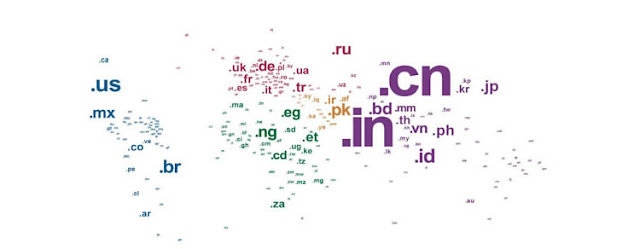Chapter 6: TLD, TLDcc, and Sub Domains
Chapter 6: TLD, TLDcc, and Sub Domains
What Are Top Level Domains (TLD)?
Let’s get back to our previous examples: Alexa.com, Linux.org, WebRevenue.co, eLearningEuropa.info, Yahoo.co.uk, all examples above end with a different ‘extension’ – .com, .org, .net, .biz… and so on.
We call this “extension” as top level domain (shortform:TLD). Examples of other TLD include .uk, .ws, .co.jp, .com.sg, .tv, .edu, .co, .com.my, and .mobi.
While most of these TLDs are open for public’s registration, there are strict regulations on certain domain registration. For example the registration of country code top level domains (like .co.uk for United Kingdom) are restricted for the citizens of the corresponding country; and the activities with such domains website are ruled by local regulations and cyber laws.
Certain extensions of these TLDs are used to describe the ‘characteristics’ of the website – like .biz for busineses, .edu for education (schools, universities, colleagues, etc), .org for public organization, and country code top level domain names are for locations.
Country Code TLDs

The full list of country code top-level domain (ccTLD) extensions are (in alphabet order):
.ac .ad .ae .af .ag .ai .al .am .an .ao .aq .ar .as .at .au .aw .ax .az
.ba .bb .bd .be .bf .bg .bh .bi .bj .bm .bn .bo .br .bs .bt .bw .by .bz
.ca .cc .cd .cf .cg .ch .ci .ck .cl .cm .cn .co .cr .cu .cv .cx .cy .cz .de .dj .dk .dm .do .dz .ec .ee .eg .er .es .et .eu
.fi .fj .fk .fm .fo .fr
.ga .gd .ge .gf .gg .gh .gi .gl .gm .gn .gp .gq .gr .gs .gt .gu .gw .gy
.hk .hm .hn .hr .ht .hu
.id .ie .il .im .in .io .iq .ir .is .it
.je .jm .jo .jp
.ke .kg .kh .ki .km .kn .kp .kr .kw .ky .kz
.la .lb .lc .li .lk .lr .ls .lt .lu .lv .ly
.ma .mc .md .me .mg .mh .mk .ml .mm .mn .mo .mp .mq .mr .ms .mt .mu .mv .mw .mx .my .mz
.na .nc .ne .nf .ng .ni .nl .no .np .nr .nu .nz . om .pa .pe .pf .pg .ph .pk .pl .pn .pr .ps .pt .pw .py
.qa .re .ro .rs .ru .rw .sa .sb .sc .sd .se .sg .sh .si .sk .sl .sm .sn .sr .st .sv .sy .sz
.tc .td .tf .tg .th .tj .tk .tl .tm .tn .to .tr .tt .tv .tw .tz .ua .ug .uk .us .uy .uz
.va .vc .ve .vg .vi .vn .vu .wf .ws .ye .za .zm .zw
Domain vs Sub Domain
Take mail.yahoo.com for example – yahoo.com is the domain, mail.yahoo.com in this case, is the sub domain. A domain must be unique (for example there can only be one single Yahoo.com) and must be registered with a domain agent (example Godaddy); while for sub domains, users can freely add it on top of the existing domain as long as their web host provide the service.
Some would say subdomains are the ‘third level’ domains in the sense that they are simply “sub folders” under the domain root directory, normally used to organize your website content in different languages or different categories. However, this is not the case to many including the search engines – it is known fact that the search engines (namely, Google) treat sub domain as a different domain independent from the primary domain.
Terms of Domain Name
To quickly recap on what we have just learned –

